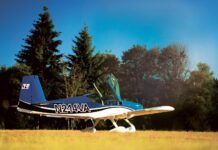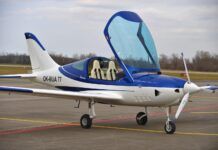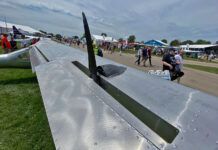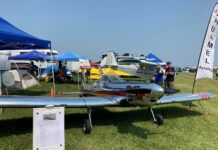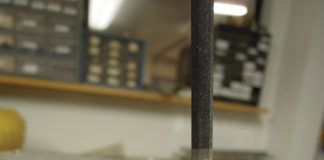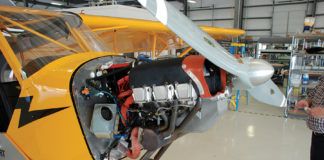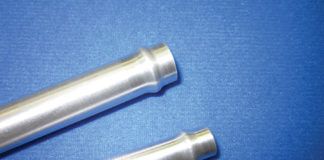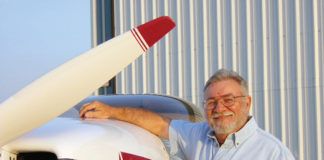This adventure began one Saturday when a neighbor mentioned that a Lazair ultralight was up for auction on eBay-and that he and another neighbor were interested in bidding on it. Im not normally impulsive, but I blurted out, “Do you want another partner?” They did, and I placed our maximum bid after the seller responded immediately to several questions we had. Twelve hours later, we were the new owners of a late-model Lazair III, the last of the twin-engine, single-seat ultralights produced in the 1980s by Ultraflight Sales of Ontario, Canada. The purchase included a serviceable enclosed trailer.
Whats a Lazair?
As you can see, the Lazair is unusual. In the early 1980s during the ultralight boom, I wrote magazine evaluations of many of the 60+ ultralights I flew, and the Lazair was a favorite. I built two Lazair IIs and was the San Diego dealer for several years.
Designer Dale Kramer was still a teenager when he began planning the Lazair. Originally, it was powered by a pair of 5.5-horsepower Pioneer chainsaw engines. He was in his early 20s when he and his wife, Linda, displayed their company’s Lazairs at Oshkosh 81. Based on my published articles, Kramer agreed to check me out in one of his 11-hp demonstrators, and it flew exceptionally well. I ordered a kit, thinking it would make a good low-cost motorglider.
Before my order was delivered, the company changed to using a pair of 9-hp Rotax 185 engines for enough power to fly on floats the company designed. My Lazair II was the first California-built Lazair to fly. I built it in a single-car garage in 28 days of spare time. The 18-hp Lazair II flew even better than the lower-powered original, and the Lazair floats worked great too.
Design Details
The Lazair is based on a large all-metal wing (144 square feet). The leading-edge D-cell came factory-built and includes the spar to which the builder riveted high-density painted foam ribs with aluminum capstrips.
Originally, Lazair wings were covered with transparent Mylar, but later models used translucent Tedlar, another Dow plastic that was made for greenhouses and had much more UV resistance. Using special double-stick and wide single-stick tape, the builder attached the plastic to the wings and tail surfaces and heat-shrank it tight.
My first version, like the originals, lacked rudder pedals and used an ingenious mixing arrangement to couple ailerons and ruddervators (like the Wright Flyer, early Ercoupes and modern jet fighters). Elegant in its simplicity, the second model incorporated rudder pedals and a mechanical switch to choose between separate or coupled ARI (aileron/rudder interconnect) mode. You could switch modes in the air.
Lazairs through the Model II version used an overhead-pivoted stick that minimized parts and worked perfectly but confused some pilots. The overhead stick moves in the conventional directions, but the pilots wrist turns opposite from normal. The Lazair pilot operating manual points out this difference, and Kramer checked for reverse sensing before letting pilots fly by running at a wingtip and moving it up or down while the pilot taxied. If the pilot moved the stick correctly without hesitation, he or she had a handle on bank control.
The wheels were close to the pilot and lacked wheelpants. Some of us wore leather gloves and used our hands as wheelbrakes to help turn when taxiing or to shorten landing rollout. The system gave new meaning to the term handbrakes; heat sensors in the “brakes” warned of excessive braking. The
tailwheels did not swivel, and ground steering was with differential power, “handbrakes” or with rudder and
aileron control.
What appears to be a nosewheel is in fact a rotary skid. Lazairs were designed as taildraggers, but on early ones the cg was just behind the wheels, so at the start of the takeoff roll, engine thrust could put the “nosewheel” on the ground briefly.
Flying Back Then
Every Lazair I sampled flew beautifully. The ultralight empty weight limit is 254 pounds, and my first one weighed less than 200 pounds. The second one totaled 210 pounds empty. With me aboard, idle-power stall speed was 18 mph. Cruise at 25 mph was pleasant, and I could climb with one engine out and soar in moderate lift with both engines off, restarting with the pull cords to motor back to the airport.
I routinely shut down both engines on short final to shorten the landing roll. The Lazair glides well, and no big sink rate results from doing this if you approach at 30 to 35 mph.
Model III Changes
Despite selling hundreds of kits, the Kramers decided to modify the Lazair to incorporate comments by potential customers. As a result, the Model III moved the wheels farther apart and forward (too far away from the pilot for the “handbrake” option), added mechanical toebrakes and wheelpants, larger pushrods to the ailerons and ruddervators, and pivoted the stick at the bottom. All of this added control system beefiness but also increased build time, cost and weight. (With a 5-pound instrument pod, our Lazair III weighs 231 pounds empty.)
None of these changes saved Ultraflight Sales from the demise of the ultralight industry in the mid to late 80s, and by about 1987, the last Lazair kits were out the door. But now there are active Lazair groups in Canada and a few in the U.S. Engine parts remain available. Finding Tedlar in reasonably small quantities if we need it may be a problem, however.
Getting Ours Ready
My partners-Ernie Moreno and Mike Pongracz-drove from northwest Oregon to Petaluma, California, for our purchase. This Lazair had not flown in more than 8 years but was stored in its trailer inside a hangar. It appeared to be in remarkably good condition. Especially important, the Tedlar was intact and still flexible (not brittle like Mylar becomes).
Moreno, our groups engine expert, ordered Tillotson carb kits. He cleaned and overhauled the carbs as I cleaned other things including the fuel tank innards, and we all inspected the entire aircraft. We installed new fuel tubing, filters and checkvalves, removed the out-of-date ballistic chute, and replaced one tire and wheel with a new spare set. After filing the points in both engines, we got them running. Using my model airplane optical tachometer, we adjusted low- and high-speed mixture, getting adequate and similar power out of both engines (near 2200 and 5600 rpm respectively).
Flying Now
My ultralight logbook said my most recent Lazair flight was in August of 85. With the “new” one, taxiing with the swiveling tailwheels and toebrakes was a challenge at first. Surprisingly, the brakes allow full-power runup of both engines without moving. Now, however, Ive become proficient at differential power bursts to taxi straight or turn.
Wearing the same gear I used for the first flight of my first Lazair (Navy Nomex flightsuit, boots and leather jacket) added to the nostalgia. My
Vertex Standard handheld radio tuned to the local airport CTAF provided communication with airport traffic and the assembled ground crew. The only instrument aboard was a Hall floating-disk airspeed indicator.
Rudders became effective almost immediately with the fistful of tiny throttles against the stops. Holding the stick neutral, I felt the tail rise, and about 2 seconds later the Lazair was flying for the first time in many years. Lazairs do not need to be rotated for takeoff; they levitate level and then assume a climbing attitude without stick pressure. I climbed at 22 mph indicated, cruised at 25 to 30, and glided at about 35. On my second takeoff, I extended both arms to show hands-off climb stability.
With an altimeter installed on the next flight, I verified single-engine performance, which was close to level at full power rather than a climb seen in the lighter models. Power-at-idle stall is at about 20 mph. These numbers will be higher for pilots of more normal or greater weight. At my weight, Vmc (minimum controllable velocity with the critical left engine off or at idle) is below stall speed. This means there is rudder authority as slow as I can fly.
On landings, little flare is needed for a soft touchdown, and a sideslip takes care of moderate crosswinds. For greater crosswinds on a reasonably wide runway, I would land angled into the wind and use crosswind taxi techniques upon touchdown.
Whats Next?
I plan to use ancient techniques to help my partners get in the air comfortably. They have both flown ultralights, so the transition should be easy. But Ill use handheld radios as I did to instruct ultralight students before there were two-seat ultralight trainers. Incidentally, about the time you read this, legal two-seat ultralight trainers will be history. I can imagine single-seat ultralight training reverting to one-way instructions from a ground-based instructor-the method we used in the early 1980s. It worked.
In the meantime, Im reliving my, er, middle age.




